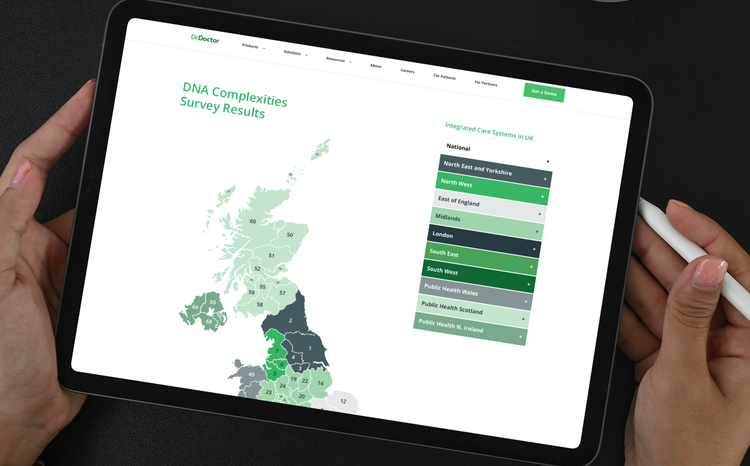Training Day DNAs
- 5 July 2007

It’s not difficult to work out the math for the wasted money on the day. A session designed for eight people that goes down to two attendees quadruples the cost per person. When so much money is being spent on new systems such as Choose & Book, Cerner Millennium and iSoft and PACS, the cost of training must not be allowed to escalate.
That’s not the end of the wasted cash and opportunity, however; the absentees will need to be allocated to another training session and each trust will have to pick up the less visible cost of lost productivity when systems arrive and staff who should know how to use them are struggling.
Something can be done
The good news is that it is possible to cut training DNAs and some of the methods used will be uncannily familiar to anyone who has been involved in cutting non-attendance rates for patient appointments.
Seven Steps to Successful Training
Overall the message is that planning, using a professional project team that includes trainers, is just as important as the training event itself, as outlined below:
1. Plan a thorough marketing and communications strategy
It might seem obvious but too often it is the Achilles heel of so many training programmes. Getting management and staff buy in means so much more than giving overview presentations and publishing a training plan. It is vital to really sell the new systems or processes for which the training is required as well as addressing real technical and workflow issues up front. So if for example you are implementing a new Patient Administration System (PAS), one idea is to run stakeholder workshops focusing on the real impact on working processes and end user experience. This is an opportunity to explode myths and promote engagement in new systems. By anticipating resistance at the planning stage and addressing the real issues you save so much grief at the delivery and ‘go live’ stages and encourage vastly improved attendance at training.
2. Include the trainers as early as possible
As a trainer there is nothing worse than turning up on site, setting up, waiting for your 6 (or 8 or 10) delegates, only to have 2 arrive, one of whom does not even know why they are there. That is when you get that sinking feeling that no matter how good you are, these people really do not want to be here. However, if you include the trainer in your stakeholder workshops they get to know the organisation and people, become sensitive to process and change issues and are better placed to make the training more relevant, effective and enjoyable. At the start they can introduce the all important “What’s in it for me?” factor. If you just book the trainer to give technical instruction on the day, you are more than likely to get dissatisfied and disillusioned delegates who will be reluctant to embrace the new technology and any changes in working practice.
3. Have a dedicated scheduling team
Scheduling is not just about booking slots it’s about selling the training and chasing delegates and/or their managers. The scheduling team should be able to re-enforce the marketing and communications messages and answer any questions about content and special needs as well as course details and timings. Our experience has shown that this is another area where the trainers can really add value and ensure optimum attendance. Both my dentist and optician have someone call me a day or two before an appointment just to remind me and if necessary book an alternative date if I cannot attend. Then someone else can make use of that slot and by rebooking an alternative date I do not miss that vital check up. I also quite like the fact that they just bother to call me. If your delegates really have something ‘more important’ to do than training, you can confirm that with their line manager and book an alternative date. If they are just forgetful then that call will save time and resources and mean no-one slips through the net.
4. Design courses that are truly engaging
This may appear as another obvious point but it actually demands a whole re-think on what training can really achieve. If six or more hours training are required, is it always best to deliver it over one day? How much learning are people really able to retain? Maybe short bursts focused on specific work processes with snappier and more interactive delivery would be more effective. A few shorter sessions spread over time can be more appealing for delegates than taking a whole day out and can also lead to greater retention of learning when supplemented by quality support materials. It means more work for the scheduling team but does not have to cost more than the traditional day long courses.
5. Ensure that the training experience is enjoyable
Word of mouth has a massive impact on attendance at training and it is not just about the course or the trainer. As a trainer I have turned up to some pretty appalling training rooms, stuffy, scruffy and uncared for – and these have been in dedicated training centres. What does that say about the organisation’s view of the training and development of its staff? The training environment should be pleasant and well appointed and all relevant equipment available and properly working. Throw in some treats, refreshments and a good lunch when appropriate, small touches that do not cost much but add real value to the experience. People learn so much more effectively when they are enjoying themselves.
6. Create a robust and prompt reporting process
There will always be technical problems or questions around specialist work processes, technical data or organisational planning that the trainer may not be able to answer or solve on the day. Also local issues may be flagged that could impact on the use of the new system that may not have been anticipated in the planning stage. To ensure the credibility of the training programme and support for the new system the delegates need to feel confident that their questions will actually be answered and not lost in some giant virtual in-box. As well as effectively gathering the right information there should be clearly defined escalation pathways to ensure that the relevant people deal with each issue and communicate the resolution and/or workaround to the delegates. Another good reason to attend the course.
7. Always offer at desk support
Often one of the first questions I am asked before training even begins is “Are we going to get a manual?” People often assume they are either not going to understand or be able to keep up or that they will simply forget all their learning immediately they leave the training room. With the assurance that an expert will be there after the course to hold the hands of the less confident, identify potential ‘super users’ and address any issues (see point 6), delegates can relax, learn more effectively and apply their learning with extra guidance. Trainers can also support business critical users who require 1-2-1 training tailored to their roles and encourage reluctant users with their enthusiasm and hands-on experience. It is a simple and cost effective way to re-enforce learning and sends a message across the organisation that you care.
Conclusion
When more time and resources are allocated to the planning, marketing and scheduling of training, then the delivery stage is so much more enjoyable, worthwhile and cost effective and your DNA rates drop dramatically. That is why investing in a professional project team at the beginning can save so much more money in the end.
Niall Shanahan is Senior Training Consultant at Training Synergy
niall.shanahan@trainingsynergy.com




